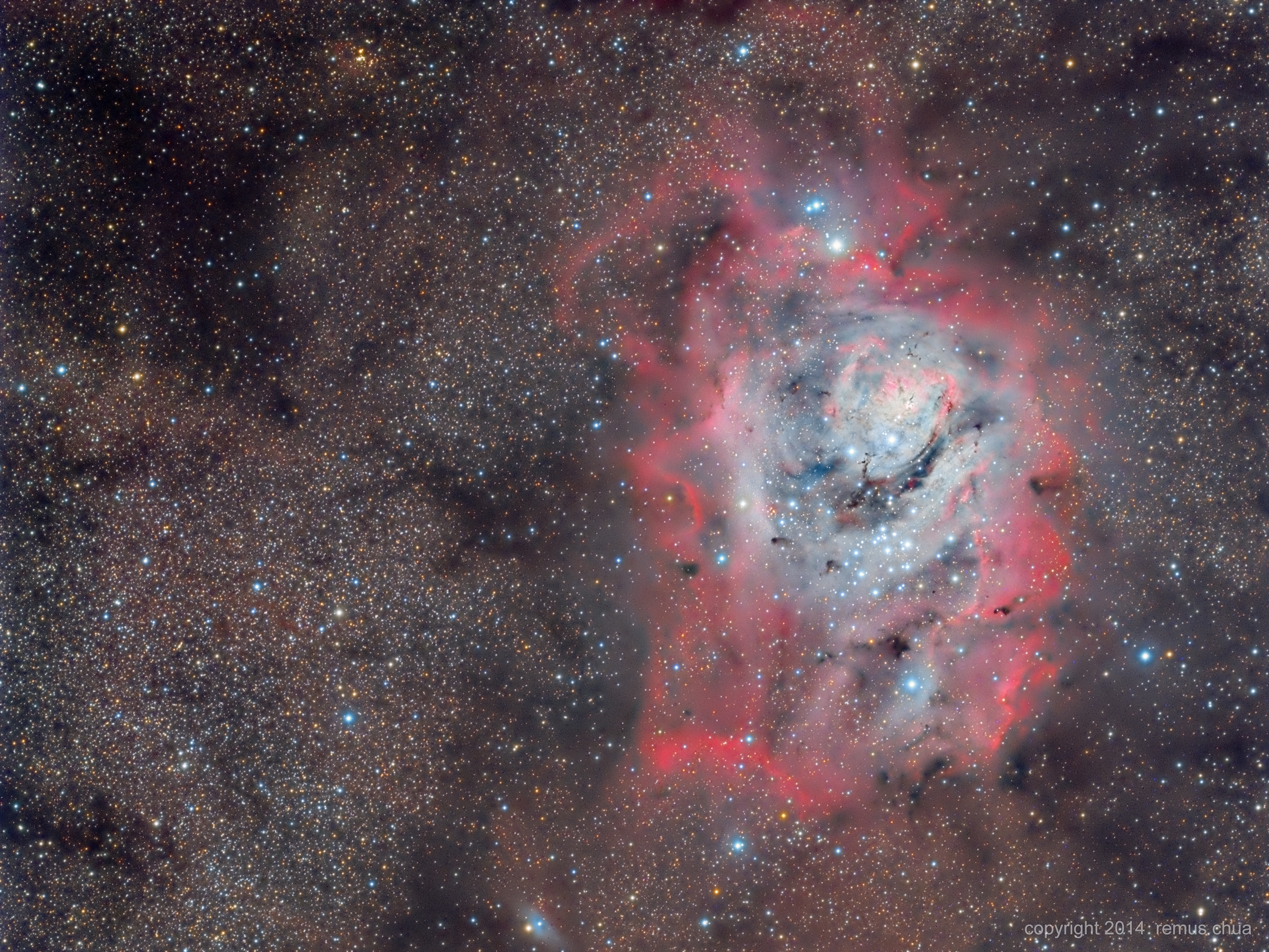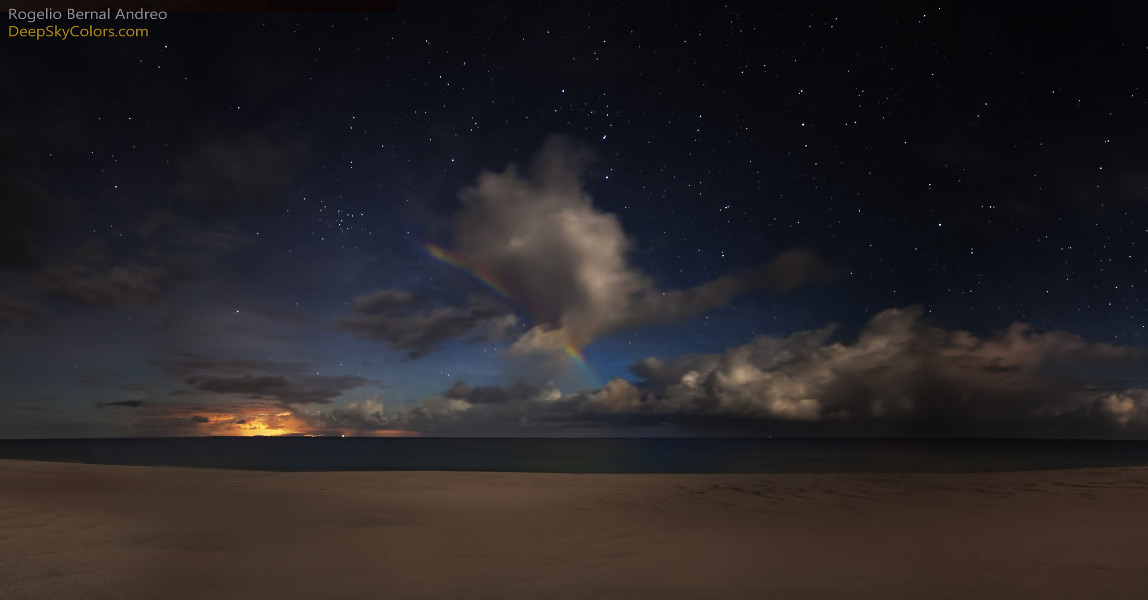The Lagoon Nebula in Stars Dust and Gas: http://apod.nasa.gov/apod/ap140924.html
The Lagoon Nebula is so bright that it can be seen without a telescope. It's located near Sagittarius and it spans 100 light years across. Inside the nebula is NGC 6530, an open cluster of stars. The nebula is called "Lagoon" due to the band of dust seen to the left of NGC 6530. The Hourglass Nebula, a knot of gas and dust, is located in center of the nebula. The Lagoon Nebula is home to many stars and it's amazing to see how there are so many things within in the "Lagoon." I love the outer ring of red color formed by M8 and how it contrasts with the white-blue in the center.
Friday, September 26, 2014
Sunday, September 21, 2014
APOD 1.4
M27: The Dumbbell Nebula- http://apod.nasa.gov/apod/ap140914.html
In 1764, M27, or the Dumbbell Nebula, was discovered. It's a planetary nebula and our first hint at what the future of the Sun is like. This type of nebula is the kind that our Sun will create when nuclear fission stops in the Sun's core. M27 is one of the brightest planetary nebulae and can be seen near Vulpecula. It's so cool how our Sun will one day look like this. I love how the colors seem to change in a ring-like pattern.
In 1764, M27, or the Dumbbell Nebula, was discovered. It's a planetary nebula and our first hint at what the future of the Sun is like. This type of nebula is the kind that our Sun will create when nuclear fission stops in the Sun's core. M27 is one of the brightest planetary nebulae and can be seen near Vulpecula. It's so cool how our Sun will one day look like this. I love how the colors seem to change in a ring-like pattern.
Friday, September 19, 2014
Observation - September 18th, 2014
Date: September 18th, 2014
Time: 8:00 PM - 9:00 PM
Place: Casey Key Fish House
Sky Conditions: Very cloudy
Instruments used: Binoculars and Meade 10"
Planets: Observed Saturn and Mars through telescope
Bright stars noted: At the zenith, the summer triangle: Vega, Altair, and Deneb; Anatares, very bright and "flickered"
Constellations noted: Scorpius, Sagittarius, and Hercules
Binary stars: None noted
Deep sky objects: None
Other: Observed one of Saturn's moons, Titan, through the telescope; noted Keystone when identifying Hercules
Time: 8:00 PM - 9:00 PM
Place: Casey Key Fish House
Sky Conditions: Very cloudy
Instruments used: Binoculars and Meade 10"
Planets: Observed Saturn and Mars through telescope
Bright stars noted: At the zenith, the summer triangle: Vega, Altair, and Deneb; Anatares, very bright and "flickered"
Constellations noted: Scorpius, Sagittarius, and Hercules
Binary stars: None noted
Deep sky objects: None
Other: Observed one of Saturn's moons, Titan, through the telescope; noted Keystone when identifying Hercules
Tuesday, September 16, 2014
APOD 1.3
Moonbow Beach: http://apod.nasa.gov/apod/ap140906.html
A rainbow at night? Not quite. It's called a moonbow and it's created when raindrops reflect moonlight from the direction opposite the moon. A rainbow is produced by sunlight reflected in rain drops from the direction opposite the Sun back toward the viewer. This specific moonbow occurred in Hawaii on June 17th, 2014. I love how you can see a lot of stars in this picture along with the moonbow. I also love the bright lights coming from the Oahu on the horizon.
A rainbow at night? Not quite. It's called a moonbow and it's created when raindrops reflect moonlight from the direction opposite the moon. A rainbow is produced by sunlight reflected in rain drops from the direction opposite the Sun back toward the viewer. This specific moonbow occurred in Hawaii on June 17th, 2014. I love how you can see a lot of stars in this picture along with the moonbow. I also love the bright lights coming from the Oahu on the horizon.
Willebrord Snell Sources
O'Connor, J. J., and E. F. Robertson. "Willebrord Van Royen Snell." Snell Biography. N.p., n.d. Web. 10 Sept. 2014. <http://www-history.mcs.st-and.ac.uk/Biographies/Snell.html>.
"Snel (Snellius or Snel van Royen), Willebrord." Complete Dictionary of Scientific Biography. Vol. 12. Detroit: Charles Scribner's Sons, 2008. 499-502. Gale Virtual Reference Library. Web. 10 Sept. 2014. <http://go.galegroup.com/ps/i.do?id=GALE%7CCX2830904066&v=2.1&u=fl_sarhs&it=r&p=GVRL&sw=w&asid=8bd327844e3d79defe085de8edae3c82>.
Norton, Stephen D. "Willebrord Snell." Science and Its Times. Ed. Neil Schlager and Josh Lauer. Vol. 3: 1450 to 1699. Detroit: Gale, 2001. 383-384. Gale Virtual Reference Library. Web. 10 Sept. 2014. <http://go.galegroup.com/ps/i.do?id=GALE%7CCX3408501397&v=2.1&u=fl_sarhs&it=r&p=GVRL&sw=w&asid=b93f88b3d05caa002f85ccbb64652ebe>.
Friday, September 5, 2014
APOD 1.2
Airglow Ripples over Tibet: http://apod.nasa.gov/apod/ap140901.html
The ripples forming a target like pattern were created after a storm in Bangladesh. The airglow is created by atmospheric gravity waves, which are waves of alternating pressure that can grow as the air thins. Airglow is not like an aurora because it is caused by chemiluminescence. Chemiluminescence is when light is produced in a chemical reaction. This photo is stunning. The contrasting colors are something unique. Personally, I think this is cooler than a rainbow after a storm.
The ripples forming a target like pattern were created after a storm in Bangladesh. The airglow is created by atmospheric gravity waves, which are waves of alternating pressure that can grow as the air thins. Airglow is not like an aurora because it is caused by chemiluminescence. Chemiluminescence is when light is produced in a chemical reaction. This photo is stunning. The contrasting colors are something unique. Personally, I think this is cooler than a rainbow after a storm.
Monday, September 1, 2014
APOD 1.1
Messier 20 and 21: http://apod.nasa.gov/apod/ap140828.html
Messier 20 is also known as Trifid Nebula. It can be seen among the constellation Sagittarius. The 300,000 year old nebula is about 40 light-years across. Trifid Nebula is one of the youngest star forming regions, with new stars in its natal dust and gas clouds. Above and to the right, Messier 21, a cluster of stars, can be seen. Messier 21's stars are about 8 million years old. Messier 20 and 21 don't actually share a connection. The Trifid Nebula is truly beautiful with its array of colors. It's kind of crazy to think that 300,000 years is considered young. It really puts into perspective how short our own human lives are.
Messier 20 is also known as Trifid Nebula. It can be seen among the constellation Sagittarius. The 300,000 year old nebula is about 40 light-years across. Trifid Nebula is one of the youngest star forming regions, with new stars in its natal dust and gas clouds. Above and to the right, Messier 21, a cluster of stars, can be seen. Messier 21's stars are about 8 million years old. Messier 20 and 21 don't actually share a connection. The Trifid Nebula is truly beautiful with its array of colors. It's kind of crazy to think that 300,000 years is considered young. It really puts into perspective how short our own human lives are.
Subscribe to:
Comments (Atom)




